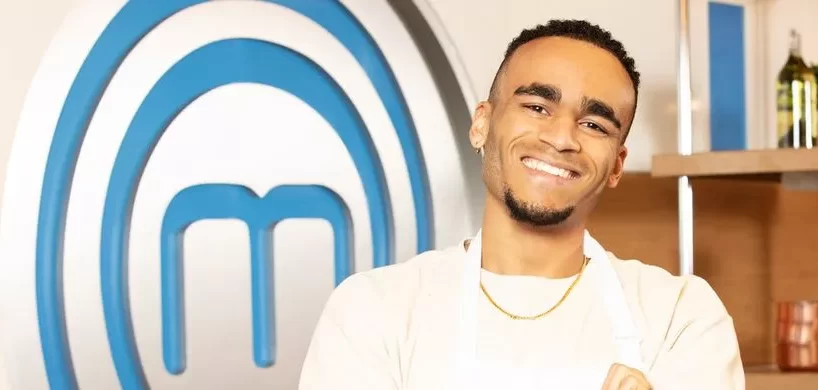There has, however, been a change in the tide over the last couple of years. Slowly but surely, digital creators are proving their worth and are being welcomed by traditional and established broadcasting and publishing outlets. They’re appearing on well-known TV shows, writing books and even competing in boxing matches shown around the globe. Recognising the worth of including established online talent and their influence, the mainstream media has started working with them, rather than against them. It’s about time.
But who are some of the social-first creators taking their content creation offline? And what does it mean for traditional media? Here, we look at some of the talent finally being recognised by your parents and grandparents, rather than just by you.
Munya Chawawa
Munya Chawawa is a comedian, satirist and content creator known for his sketches and many different characters. Behind the scenes, Munya has been honing his craft for years but has recently found his fame flourish.
Munya was a writer on Charlie Brooker’s Netflix mockumentary Death to 2020, and his fictional drill rapper ‘Unknown P’ signed a deal with Atlantic Records. Now, he’s making regular appearances on primetime television shows.
Most recently, Munya announced that he is to be a part of the BBC One Celebrity MasterChef 2021 line-up. Sharing the news with his followers on Twitter, Munya said: “Can’t believe a jerk rice parody 2 years ago has led to this! Barty Crease has a Netflix deal, Unknown P has signed to Atlantic and now Jonny Oliver is on @MasterChefUK (kind of) – the trilogy is complete.”
Joe Sugg
Joe Sugg first became known to fans as Zoe Sugg’s little brother but soon carved out a career in his own right way back in 2012 when he began posting videos on YouTube as ThatcherJoe.
Since then, he became the first ‘social media star’ to appear on family favourite Strictly Come Dancing and even got to the final with his dancing partner and now girlfriend Dianne Buswell. He’s now gone on to portray Ogie Anhorn in the West End production of Waitress and has made his television acting debut in the fourth season of the BBC One drama, The Syndicate.

Candice Brathwaite
Candice Brathwaite started blogging in 2016 in a bid to show that young black families weren’t just surviving but thriving, and share her experiences of motherhood. She is also the founder of online initiative Make Motherhood Diverse, which aims to ensure many more people see themselves reflected online.
Now, Candice has a regular style segment on popular morning programme Lorraine on ITV where she has become loved by viewers for the way in which she gently encourages people to be bolder about embracing colours. She’s also now a Contributing Editor to Grazia and regularly appears on TV and radio where she talks about maternal mortality rates for black women in Britain.
Adding another string to her bow, Candice wrote her debut book I Am Not Your Baby Mother, which is about being a black British mum, last year. It has since made the Sunday Times Bestseller List.
KSI
KSI is a YouTuber, recording artist and boxer and is also part of the British YouTube group known as the Sidemen. After joining YouTube way back in 2009, KSI steadily built a following posting gaming-commentary videos of the FIFA video game series.
Since then, it’s fair to say that KSI has diversified when it comes to creating content. He has gone on to launch a music career, with his debut studio album Dissimulation reaching number 2 on the UK Albums Chart. He’s also released singles with Craig David and Anne-Marie and Yungblud.
KSI featured in comedy film Laid in America in 2016, has released an autobiography and been involved in boxing matches with fellow YouTubers Joe Weller and latterly Logan Paul, which was dubbed “the biggest internet event in history”.
Not limited to online content creation, music and boxing, KSI is now a familiar face on mainstream television and has put on his apron for Celebrity Bake Off 2021 where he appeared in aid of Stand Up To Cancer.

Why are traditional formats wanting to work with social talent?
Social-first creators have built such large and engaged followings online that it was only a matter of time before traditional outlets started taking notice. Though some of them might still get negative press (the influencer-Dubai travel scandal, anyone?), traditional media is recognising the impact, and influence, that creators have – and their potential for multiple industries.
After all, a lot of creators are multifaceted and can not only create engaging content but shoot, edit and produce it themselves. Social creators can also often have bigger and most importantly younger audiences than most traditional celebrities and TV personalities.
By introducing social-first creators to traditional formats like television, the deal is mutually beneficial: not only will the digital creator gain an even greater fanbase, bigger career and earn money, the primetime TV shows will be able to tap into their lucrative younger audiences. An influencers’ audience is often highly engaged and incredibly loyal and more often than not, they will go to where that creator does, thus flocking in their droves to whichever mainstream programme they are appearing on.
What does this mean for the future of traditional outlets?
The internet has completely transformed the way in which younger audiences consume content and as they are no longer familiar with traditional TV shows and formats, it is up to social-first creators who built their audiences online to bring their attention offline.
Traditional and established broadcasting and publishing outlets are increasing their audience sizes, viewing ratings and their online engagement through social-first creators and so it doesn’t seem as though this method of incorporating creators into their formats will be coming to an end anytime soon. Why would they want to stop trying to bring in and attract crucial 16-34 year old audiences that they are severely lacking?
As long as it is mutually beneficial to both parties, then the trend of seeing online talent moving more into the traditional media space will continue – and they might just be the ones to bring younger audiences back.






